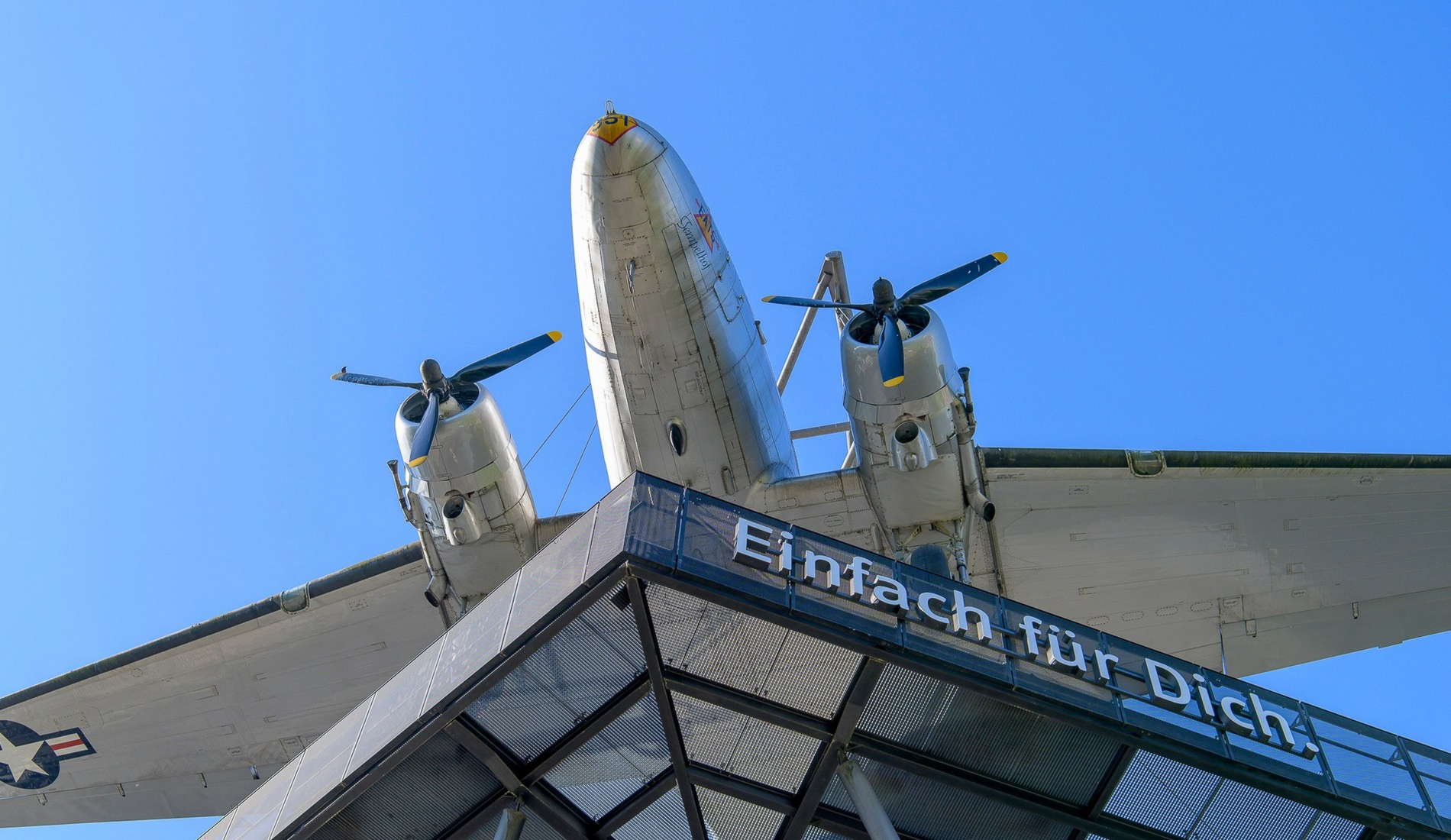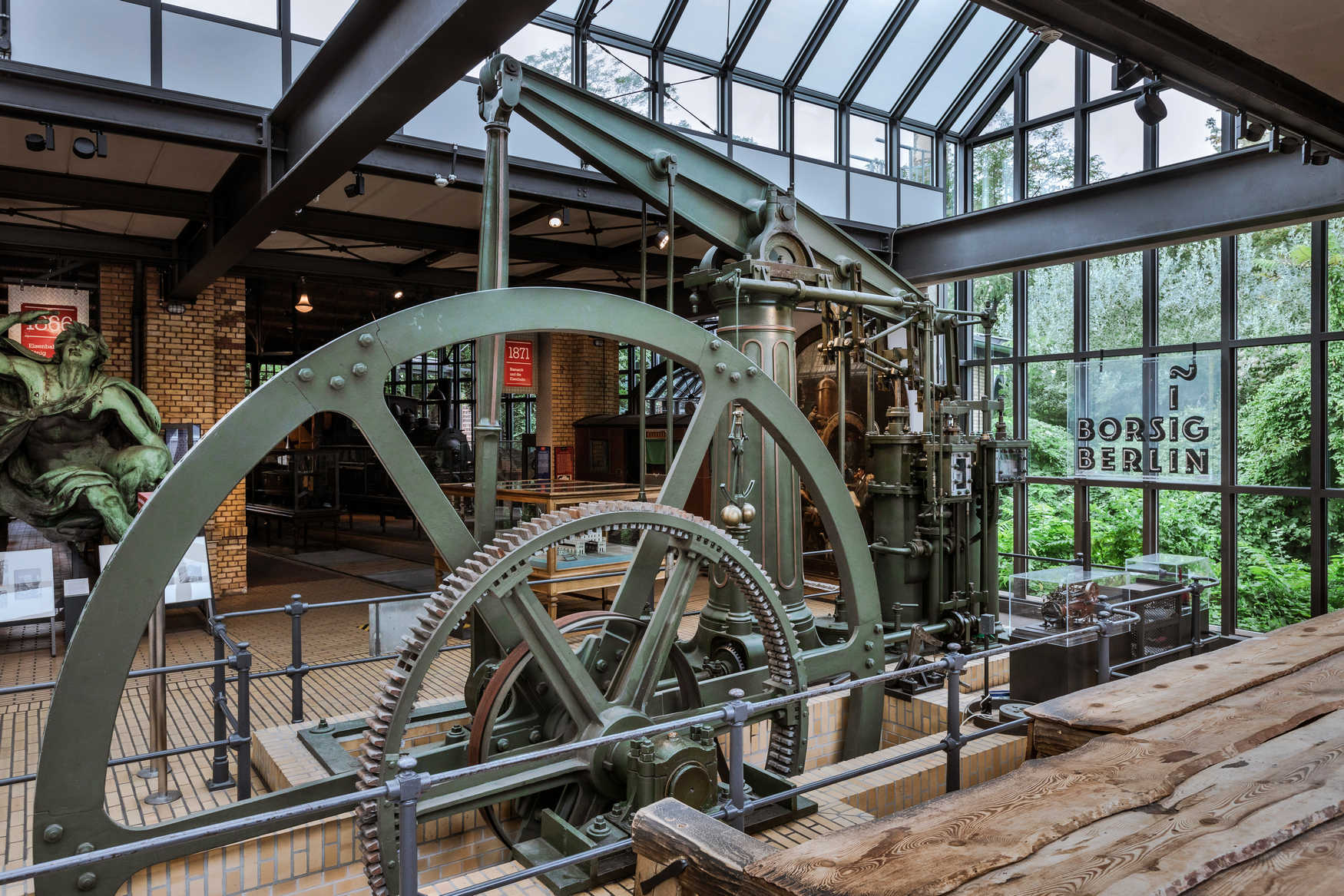If you're wondering which museum to take the kids to, don't hesitate to spend half a day at one of the German capital's most famous museums — the Deutsches Technikmuseum, which opened in 1983. You won't regret your time there.
The museum, one of the largest in Europe, covers an area of 26,000 square metres. Its main attraction is the legendary American C-47, known as the 'Sultana Bomber', which took part in the Second World War. The museum's collection of aircraft is truly impressive. The military Messerschmitts and Junkers, which can't be found in any other museum in the world, are just some of them.
The site of the Technical Museum in Berlin is no less famous: it once housed a goods station, a factory and a workshop for repairing trains. The museum guides make sure to mention this fact.
The concept of the museum's exhibitions is not only a visual experience, but also an interactive learning experience. Thanks to modern technology, young visitors can try their hand at various technical fields. For example, children enjoy trying to navigate a river port in a ship simulator. The Technical Museum also has exhibitions on communications, transport, energy, manufacturing, sea and river navigation, space and aviation.
Permanent exhibitions at the museum
Sugar
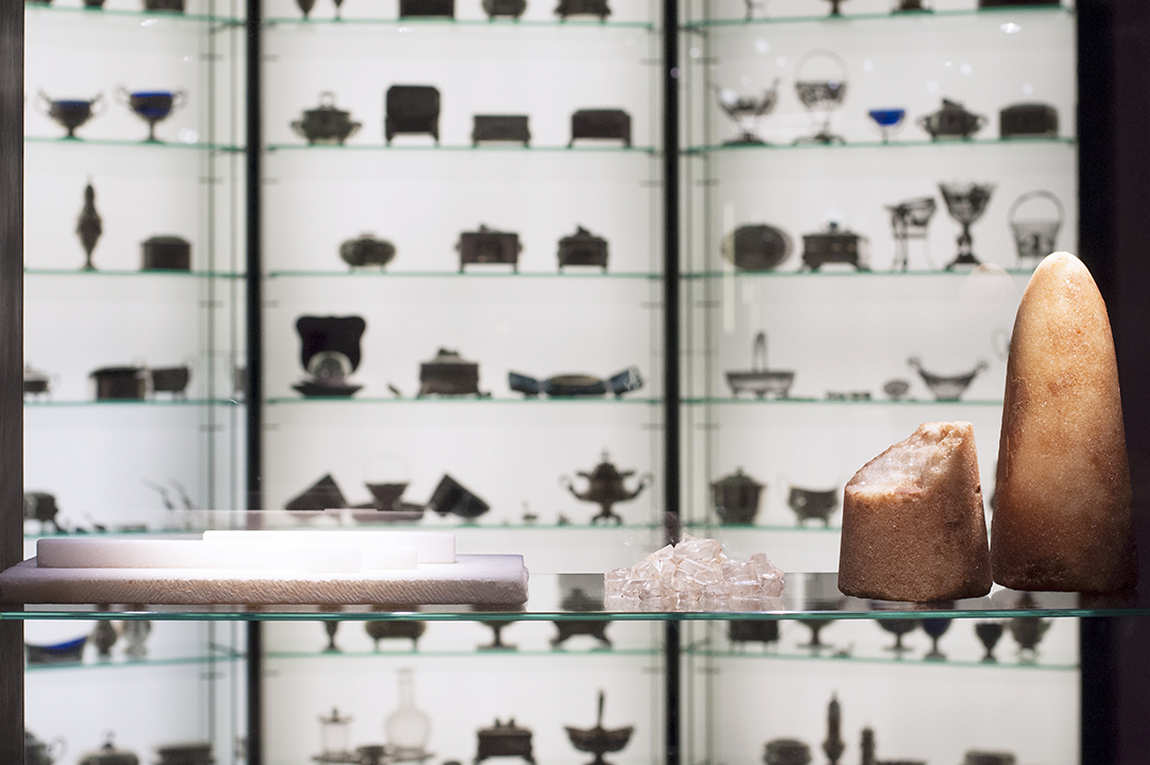
Exhibition "Sugar and more!" is the new home of the Sugar Museum, which was opened in 1904 at the Sugar Industry Institute (Institut für Zuckerindustrie). The exhibition showcases the fascinating range of uses for sugar and the social changes it has set in motion. The queen of crops, the sugar beet symbolizes the agro-industrial revolution of the past. The future is symbolized by new technologies that use sugar molecules to store energy, as bioreactors and raw materials for 3D printing.
Chemicals and Pharmacy
On 400 square metres, you will visit two large areas: the blue area dedicated to the science of chemistry, and the green area dedicated to pharmaceuticals. Pharmaceuticals, or medicines, help our bodies by regulating chemical and hormonal processes. Their production is subject to the same laws of chemistry as the production of 'ordinary' chemicals. After all, all substances are made up of molecules. And the discipline that deals with combining and modifying molecules is chemistry.
The Network
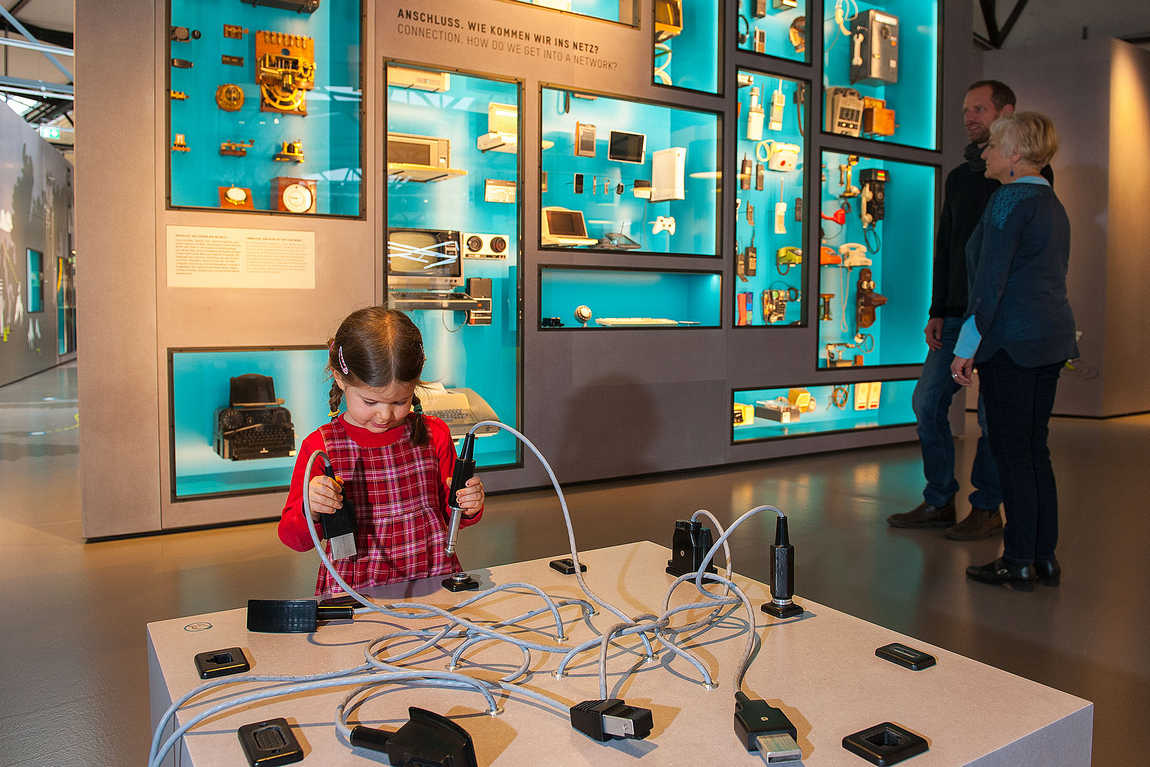
How do information and communication networks function? How do they affect our daily lives? And why do we still want to be in contact with each other? This exhibition shows how we realise our desire for human communication.
Printing
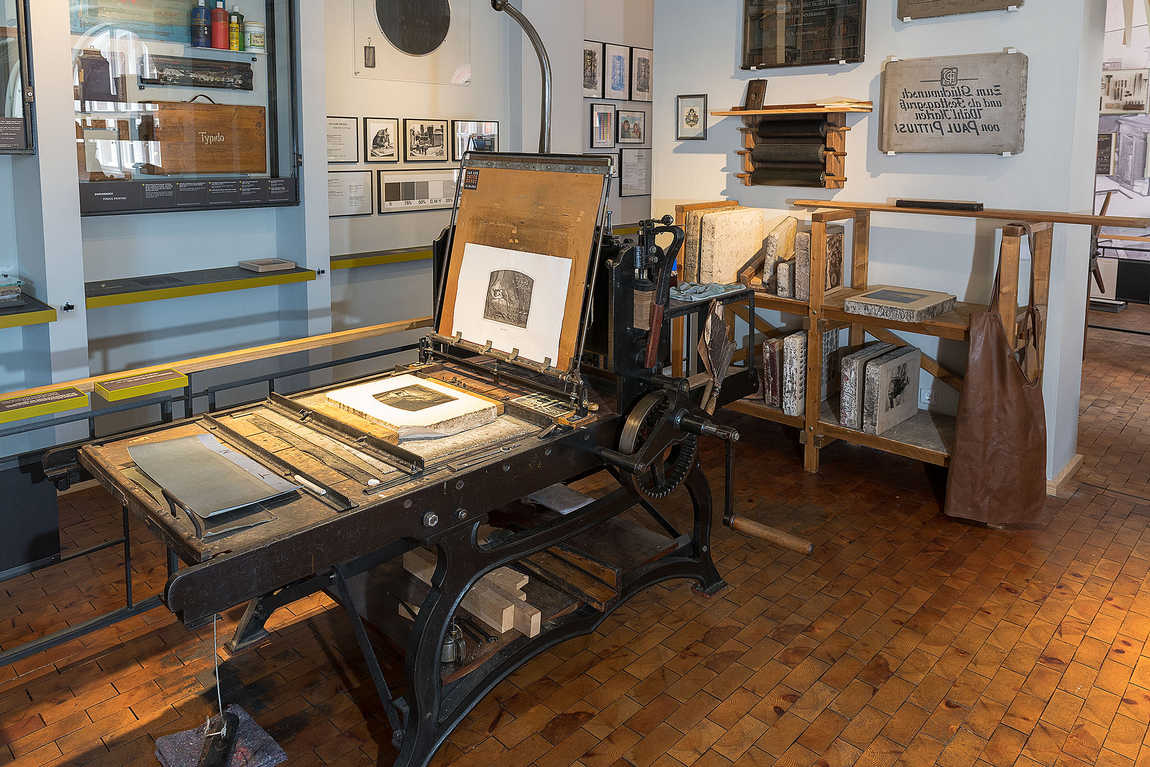
The "Print" exhibition offers visitors practical exhibits and multimedia objects. Two hundred square metres of exhibition space are dedicated to the development of printing technology, starting with the innovations of Johannes Gutenberg in the mid-15th century.
Among the most interesting exhibits are old printing presses and machines that represent the most important achievements in the history of printing and typography. These include the Stanhope iron press (1835), a high-speed press originally powered by steam (1895), and the pneumatic Heidelberg work press (1963). These presses illustrate the progress of technological innovation.
Rail Transport

Forty original railway vehicles, some still smelling of soot and oil, form the basis of the exhibition. The halls contain many unique, highly detailed models of railway carriages and locomotives. Built to a scale of 1:5, these models were made around 1900 by apprentices seeking to qualify as craftsmen. They are displayed alongside a wide range of exhibits and provide an accurate representation of how people used to work and travel by train.
The interactive museum Science Center Spectrum is 500 meters away.
Shipping
Visitors to the Sailing exhibition are greeted by Captain Nemo on the imaginary submarine Nautilus. The sailor from Jules Verne's novel 20,000 Leagues Under the Sea talks about the nature of water, the oceans and the dangers of the sea. Then there are the more fascinating stories, myths and legends of sea monsters and decorative sculptures on the bows of ships, mostly made of wood. Such figures formed a prominent part of the front of the ship and contributed to the particular identity of the ship itself. The actual motive for placing a carved figure on the bow of a ship remains unclear. What is certain, however, is that these decorations were historically used in the belief that these "icons" had a strong magical or religious significance.
The main part of the exhibition is dedicated to deep-sea navigation. It begins with the chronological exhibition Ships and History. Fifty-two ship models (scale 1:50) demonstrate changes in size and shape over the past 10,000 years — from leather boats to aircraft carriers. Other exhibits focus on a wide range of topics relating to deep-sea vessels.
Photo Technology
For almost 200 years, photography has allowed people to capture the most vivid moments of time. How it does this is explained in the exhibition "Photographic Technology". One part is dedicated to the history of photographic technology, from heliography to 3D photography. The other part is dedicated to the practical applications of photography, from private portraits and advertising to war and espionage.
Jewelry Manufacture
We've probably all got a pair of rings, chains or bracelets. But have you ever wondered how such beauty is created? Check out this exhibition to learn all the secrets of jewellery making. At the centre of the exhibition are six jewellery-making techniques: embossing/pressing/stamping, drawing/rolling, casting, goldsmithing, guilloché/engraving and chain-making.
Visitors can follow step by step how a piece of jewellery is created. Historic machines are used in the process — some manually or foot operated, others electrically — such as a friction screw press for heavy embossing or a centrifugal casting machine for casting various jewellery parts. A hammer that stamps metal with a seven-ton punch is quite impressive.
Aviation

The exhibition "From Balloons to Berlin Airlift" illustrates the rise and fall of German aviation. The exhibition features more than 40 aircraft whose stories are intertwined with the personal experiences of contemporary eyewitnesses.
Computers
The museum staff have not forgotten about Konrad Zuse, the man who gave the world a personal computer. A very interesting 300 square metre exhibition was organised especially for the centenary of the inventor.
The focus of the exhibition is on the first computer — the Z1. In 1935, at the age of 25, Berlin engineer Konrad Zuse began working on a fully automatic computer which could solve all the complex mathematical problems on its own. To realise his idea, Zuse quit his job, occupied his parents' living room for several years and gathered a group of like-minded people to help him with his work. Konrad Zuse completed his Z1 in 1938. The computer was freely programmable.
Berlin's Science Museum also has a Spectrum — a science centre where children can experience real scientific experiments. There are over two hundred of them, from A to Z.
Not to be missed is the Zeiss Major Planetarium, one of the largest of its kind in Europe (9km from the Technical Museum).


